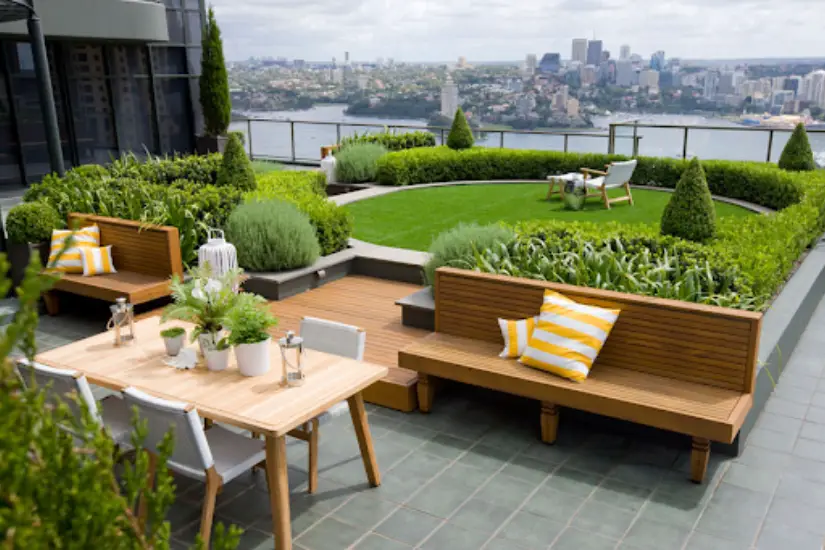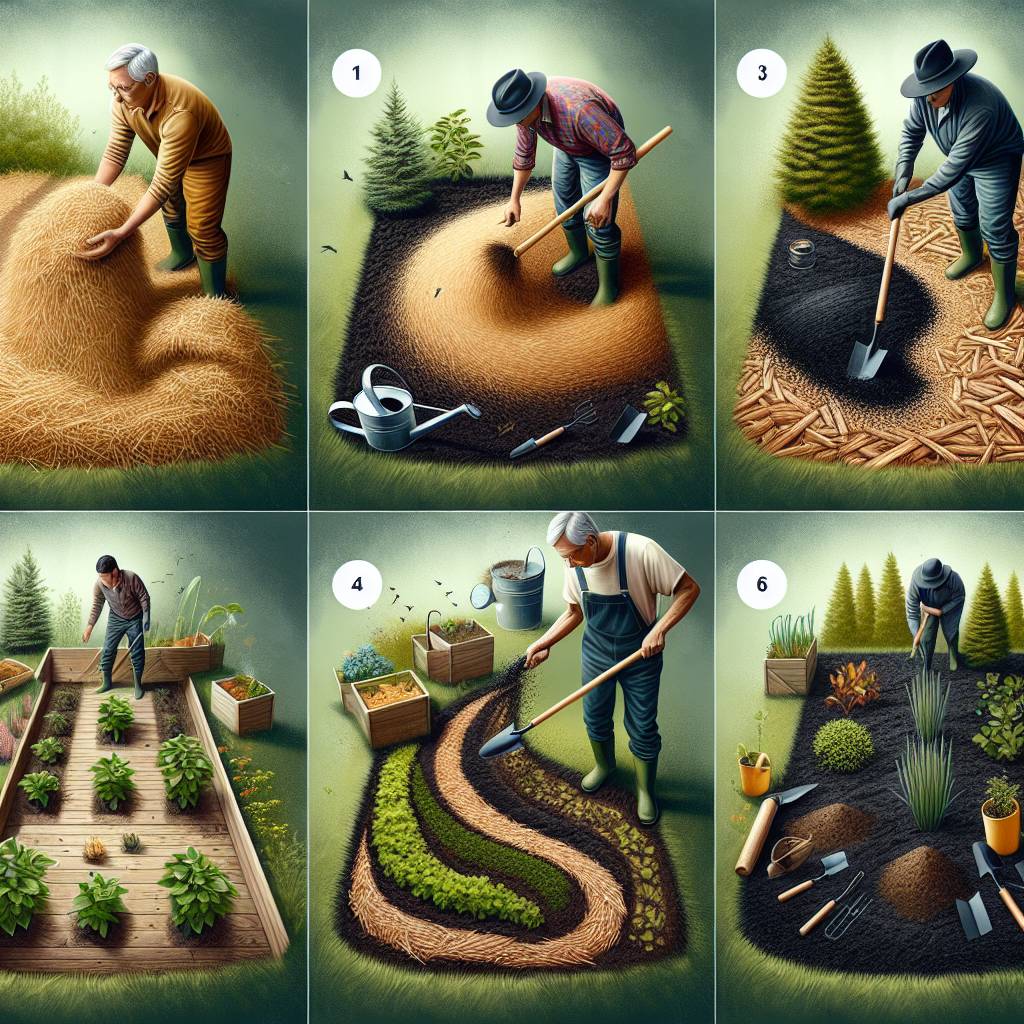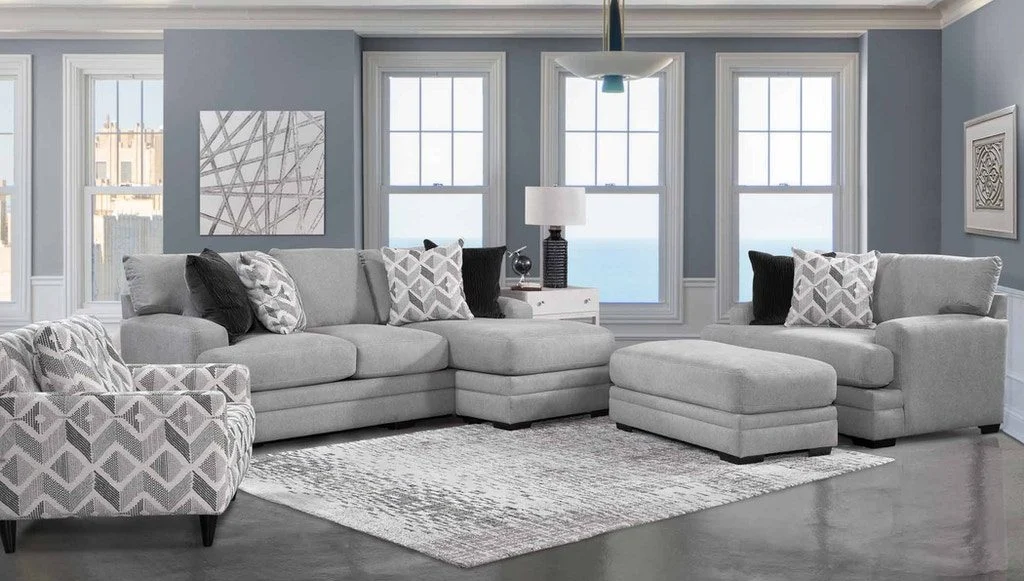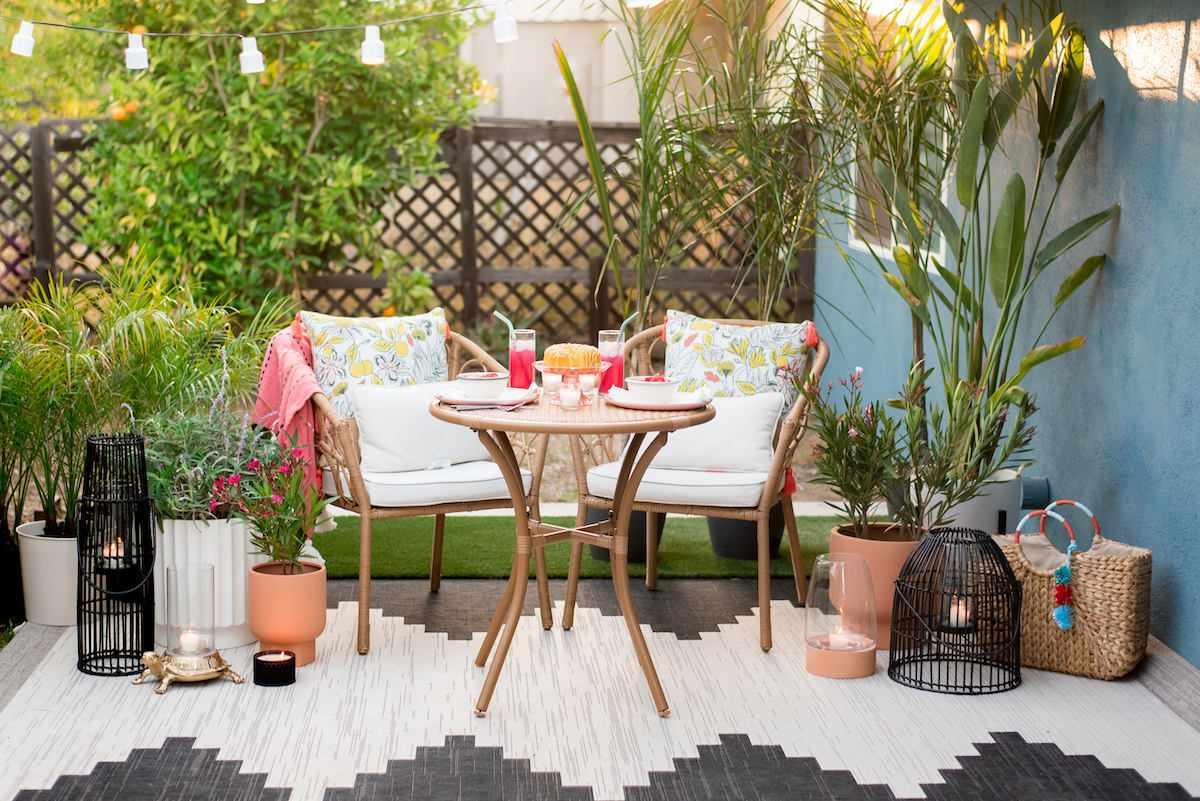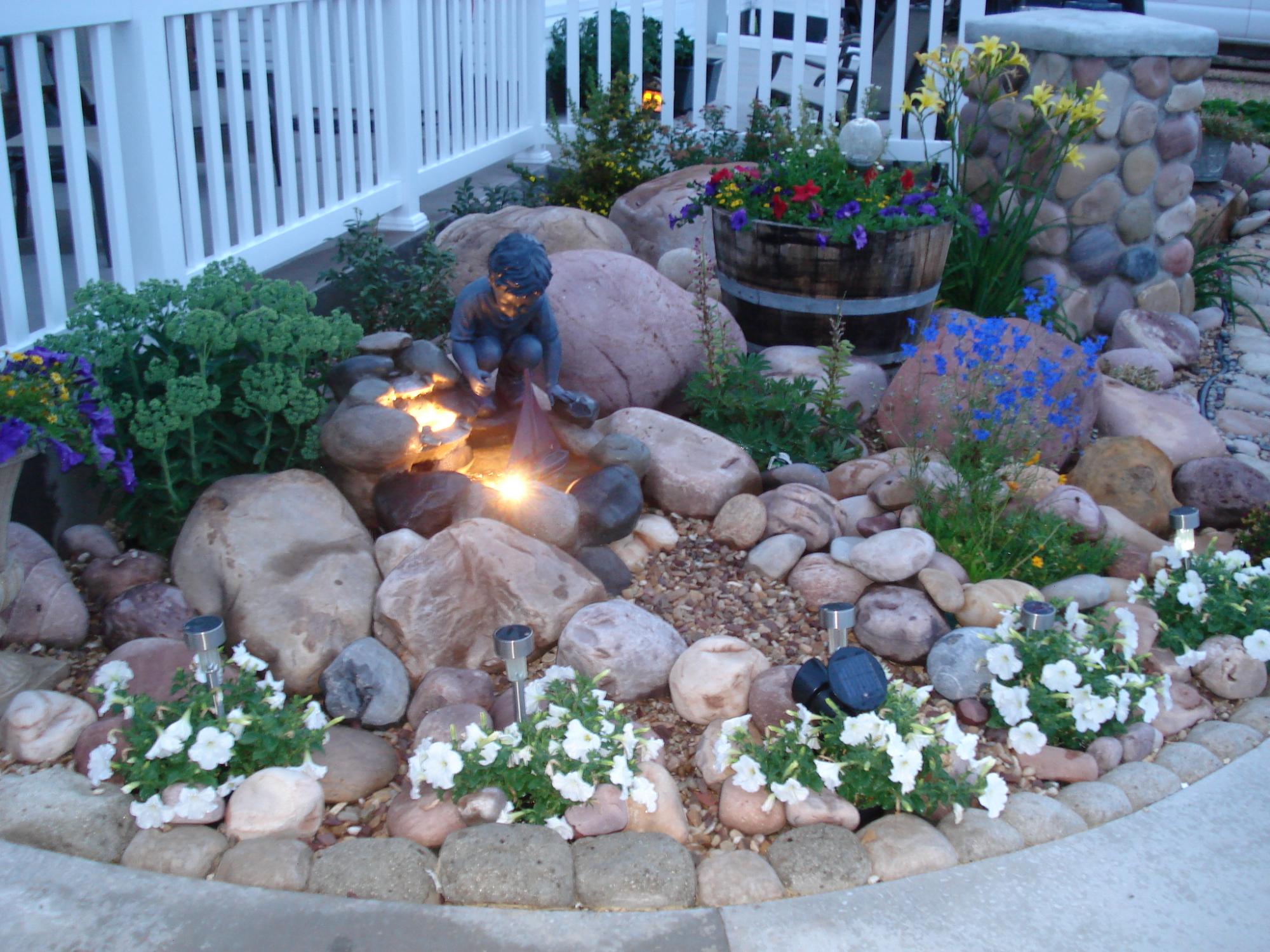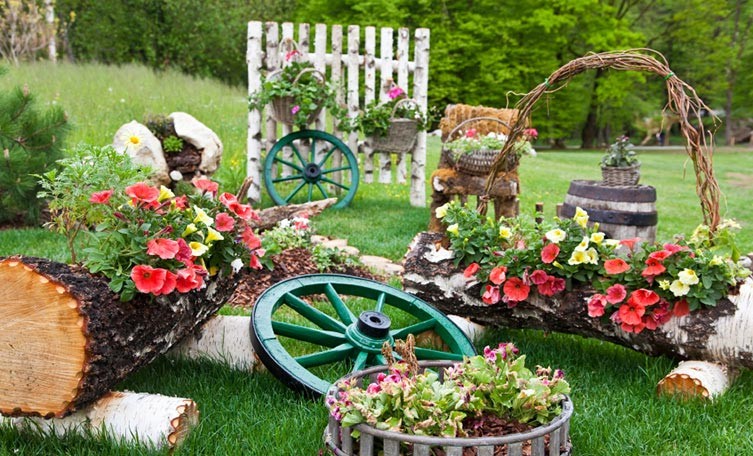Residential roof garden design is a team effort. Begin by talking with a landscape designer, studying your building’s alteration agreement, and understanding any limits that apply to your residential outdoor space.
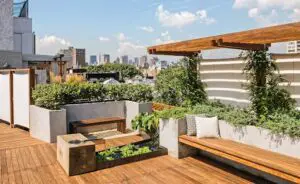
Creating a beautiful rooftop garden is a multi-faceted endeavor that may include designers, structural engineers, architects, and numerous contractors such as roofers, carpenters, horticulturalists, electricians, and plumbers, depending on the intricacy of your project. There are numerous advantages to building a roof garden!
Creating a luxurious rooftop patio

The landscape design concept for your roof or terrace garden should consider your preferences. Goals and aspirations, analyze the site’s challenges, and establish programming based on who the users are and their lifestyles. It should approach the site from an aesthetic, architectural, practical, horticultural, and sustainable standpoint, as with all garden plans.
Understand the weight limitations of your roof

Interpret the weight constraints for your roof or terrace since they will influence which pieces you choose and how you place them in your outdoor environment. The loading capacity of your roof structure refers to how much weight it can support. Each roof has a maximum of pounds per square foot that defines how much weight it can support.
How do I determine the weight limit for my ideal roof garden?
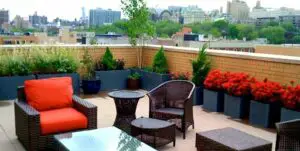
The management firm for your building, as well as an architect, developer, or building engineer of record, may be able to tell you what the roof’s weight-bearing load is. It is typically featured on building blueprints as a loading schedule. If that information is unavailable, you could hire an engineer and a roofing contractor to investigate it. Once you have that knowledge, you can assess what is doable regarding rooftop garden design limits.
Rooftop garden safety considerations
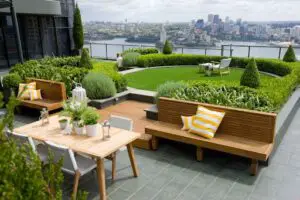
The waterproofing seal will be compromised. Stone or porcelain pavers installed on pedestals atop the existing roof can provide a protective surface for the roof and a recreational “deck” for household usage. However, in NYC, local laws only allow a combustible surface to cover up to 20% of the roof surface.
What is the distinction between an intensive and an extensive roof garden?
Roof gardens have been around for centuries. Intensive green roofs or terraces are a standard amenity on the luxury condo or coop buildings. They have deeper soil, irrigation systems, and a more comprehensive range of plants and habitats. Roof gardens are often developed for amusement and recreational activities, as well as to create an outdoor living space for those living in a structure with little or no sun protection.
An extensive green roof has a planting medium that is a few inches deep, requires little or no irrigation, creates a stressful environment for plants, and is suitable for covering large areas. — maintain drought-tolerant sedums (succulent rooftop plants) or shallow-rooted perennials that use little water. Plant diversity is minimal on these roofs to ease care and ensure that all plants have identical moisture requirements. These rooftops may turn brown during dry spells, only reappearing when it rains. They are appealing, functional, and efficient.
Installation of gardens and building of rooftop gardens
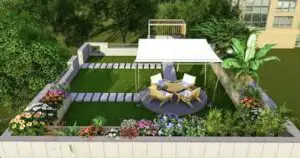
Access to the rooftop garden – the logistics of moving goods onto your expansive roof area, tiny rooftop garden, terrace, or balcony should be well considered. What are the maximum dimensions of all the doorways, elevators, tunnels, and stairwells that lead from your building’s front door to your outdoor space through a freight elevator? Throughout the construction process, common areas and interiors must be preserved. Ideally, conveniently. However, in other cases, the material can be hoisted onto a roof deck using a crane.
Weight reduction for your roof garden
- Porcelain pavers are significantly lighter than concrete or stone pavers.
- Use a soilless planting medium or lightweight soil.
- Planters made of 1/8″ aluminum or fiberglass that are lightweight. Planters made of wood, stone, or ceramic are often hefty!
- Plants that are not woody, such as grasses, succulents, other perennials, and annuals, should be used. If trees are an option, choose those with small root balls.
What type of rooftop planter boxes should a terrace garden have?
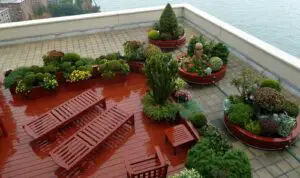
For a roof deck or terrace, we recommend using lightweight planters. Planters should be made of fiberglass (or similar material) and aluminum. Terracotta and plastic planters are poor investments since they shatter from freeze-thaw cycles and do not withstand the environment well. Because wood is an organic substance, it will deteriorate if filled with dirt.
Containers (planters or pots) should have excellent drainage due to the use of the proper planting media and the number of drainage holes provided. The container should be raised an inch or two above the surface with some “dunnage” to allow water to drain out and protect the surface upon which it sits while also enabling ventilation between the bottom and the surface.
Upkeep your rooftop garden
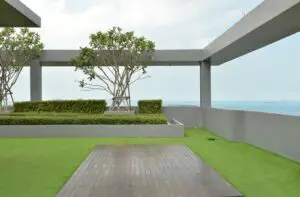
Like any other traditional, well-kept garden, terrace and roof gardens require rooftop landscaping maintenance. It is vital to select suitable plants, fertilize as needed, mulch to decrease evaporation during the spring-summer-fall seasons, and provide a thicker layer of mulch during the winter freeze-thaw cycles. Plant failure, diseases, and pests are reduced when proper garden cultural practices, or cultural controls, are used. Perennials should be pruned and divided since they might become compacted in their planters. Pavers and site furnishings must be cleaned regularly, as must drains and surfaces.
